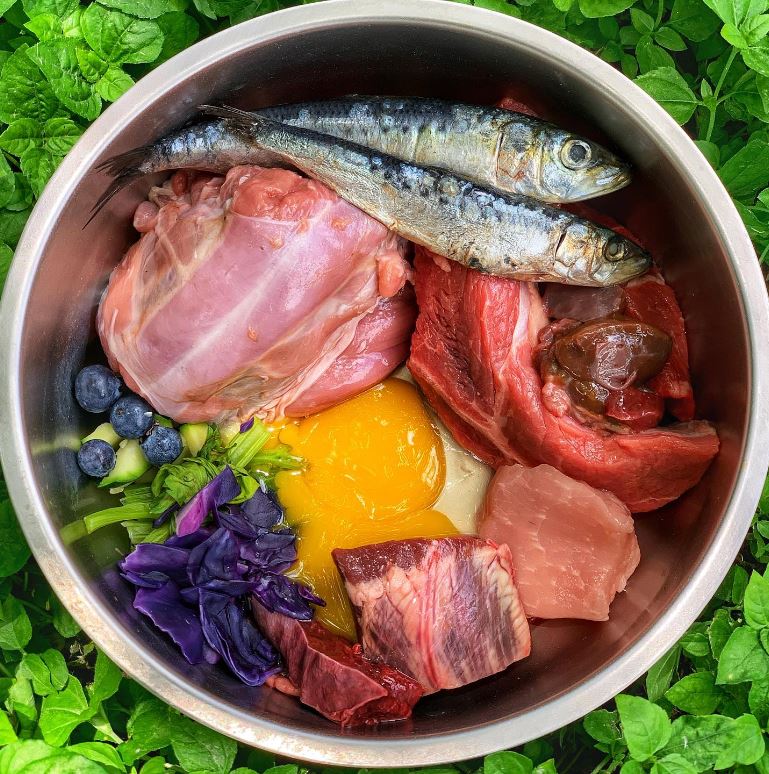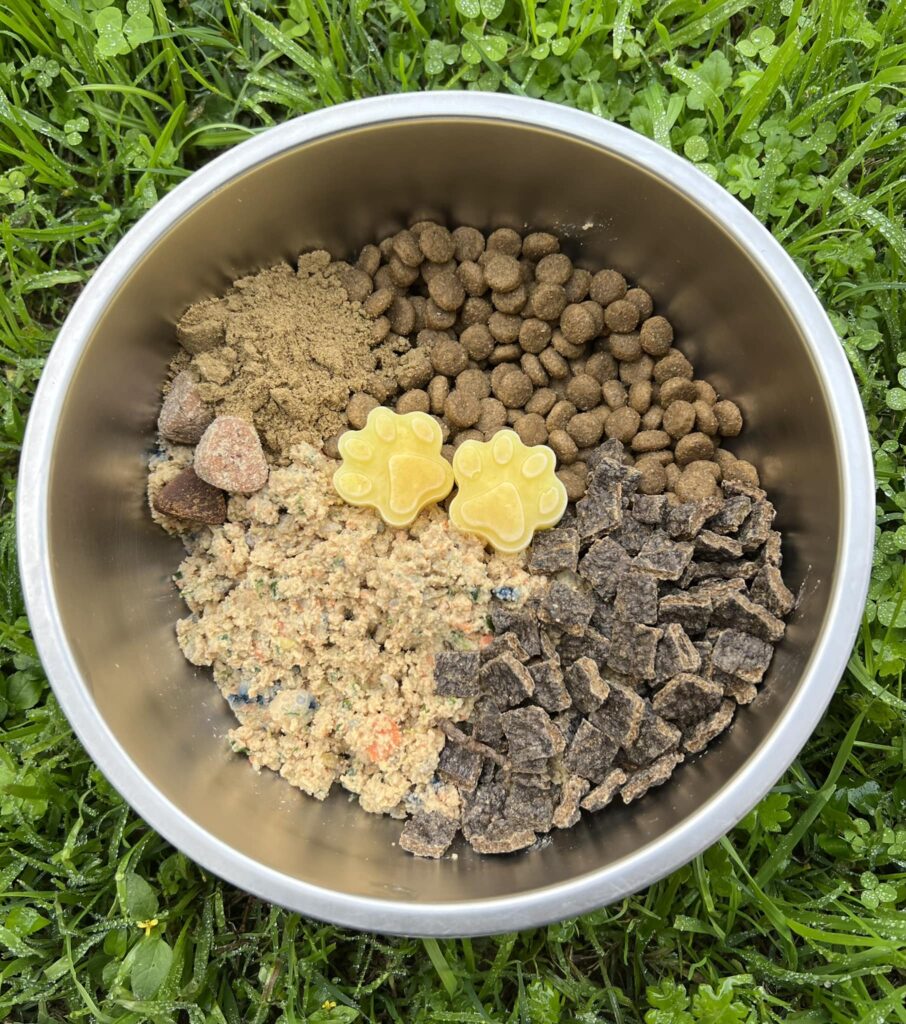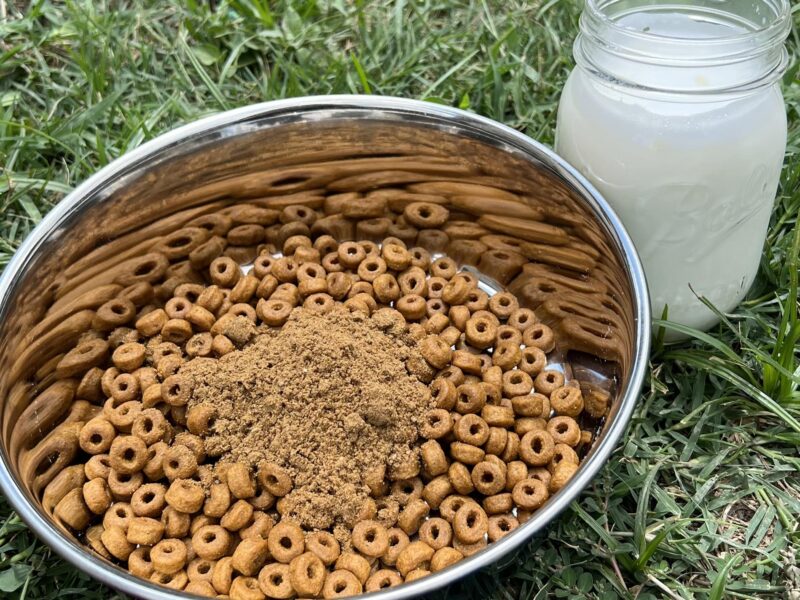
The raw vs kibble debate is something that has gone on for as long as social media has been alive. Which is better? Why does my vet not support raw? Will raw make my dog live longer? These are just a few of the most common questions you may find when scouring various social media platforms. These conversations often devolve into arguments where half truths and various myths are thrown around. It makes it hard to know what to believe. Here, we will try to explain the pros and cons of each method of feeding and try to clear up some common misconceptions.
Fresh Food is More Nutrient-dense
Probably one of the most common claims is that cooking kills nutrients in food, rendering kibble practically useless to our dogs. Many will claim that kibble is just “dead” food and merely full of “fillers” fortified with vitamins. This is not quite true, though like most any myth there is a kernel of truth to this way of thinking.
Cooking food does alter its nutrient profile, however nutrients are not being totally depleted like some claim. The end product is simply different and for this reason, kibble and other varieties of cooked food must be formulated differently vs raw. Kibble is providing nutrition to the dog and supplements are added simply for balance. Nutrients interact with each other like pieces of a puzzle. If the formula isn’t balanced, your dog will not be able to utilize the existing nutrients to their fullest potential.
The same can be said of raw diets. There are many pet owners out there that think throwing together a certain ratio of muscle meat, organs, and bones is good enough. This is very far from the truth.
Just like commercial foods, raw diets must be balanced against a reputable guideline. The guidelines set by the National Research Council (NRC) are considered the gold standard. AAFCO, the guideline used in commercial foods, is based off of NRC guidelines. If you are not properly balancing your DIY meals, your dog’s raw diet will be lacking in several areas and you would be better off feeding any cheap grocery store food at that point.
It is worth noting that, while both kibble and raw are valid forms of feeding and can both provide a complete diet, there is scientific evidence that the amino acids in fresh foods are more bioavailable to the dog than in kibble. This would be the main advantage of fresh if we want to really dig deep.

Carbs Are Unhealthy
This is likely one of the most common examples of human trends spilling over into pet care. Many pet owners are choosing to forgo carbs with the belief that it will make their dogs healthier. The truth of the matter is that carbs are not inherently unhealthy. In fact, carbs do have several benefits.
Most notably, carbs provide the dog with glucose. There are many people that will oversimplify this fact by stating that carbs just break down into “sugar” which makes them inherently unhealthy. When people say this, I somehow imagine that they’re picturing household sugar in their minds. The truth is that when we withhold carbs, the body defaults to breaking down protein into glucose instead. Our dogs are getting these “sugars” no matter what, however getting glucose from protein isn’t the most ideal.
Protein is also used to build and repair muscle and tendons. By providing an adequate amount of carbs, we are actually able to spare protein so that it can perform important functions in the body. At the end of the day, glucose is extremely necessary for energy and brain function.
Another advantage to carbs is that they are inherently lower calorie than their protein and fat counterparts. No, it is not true that carbs automatically equal weight gain. By providing carbs, we can provide adequate nutrients without overdoing calories. This is especially important to our overweight pet population.
Raw Will Result in Less Vet Bills
This is one of the sillier, yet very consistent claims made online. There is a wide belief that kibble causes ailments such as cancer and that raw will extend a dog’s life and improve their health automatically. This is very far from the truth.
There is no evidence that feeding a raw diet will keep your dog out of the vet’s office or lower your vet bills. I would say there is more of a correlation between your more misguided raw feeders and simply not going to the vet at all. You can’t have a problem if you don’t find it, after all.
Many illnesses, such as cancer, are affected by many factors that are not limited to diet. This includes genetics, environment, and often just plain luck.
There is also the issue that most raw diets can be inherently very high in fat. While some dogs can handle this, it is not unheard of for high fat diets to cause pancreatitis. This is something that can be triggered at any point and can be an inherent risk with feeding raw depending on the individual dog. This is where something like a fresh cooked diet or a commercial dry food could have an advantage.
Okay. So Which is Better?
It would be incredible if we had an easy, straightforward answer to which method of feeding is the best. The truth is, when they’re all balanced nutritionally, it’s all perfectly acceptable. If you prefer convenience and shelf stable products, kibble may be the most ideal method of feeding for you. If you like to have control over ingredients and plenty of freezer space, you may prefer raw or homecooked. No matter what, we are all doing our best for our dogs and every balanced feeding method is valid.

